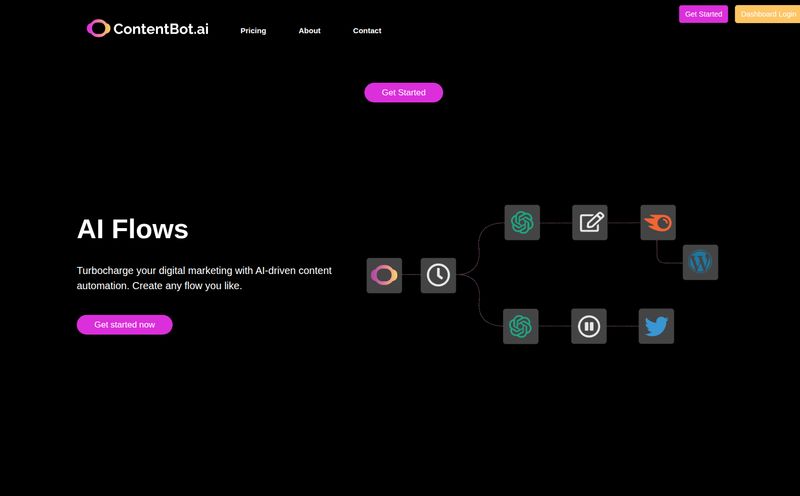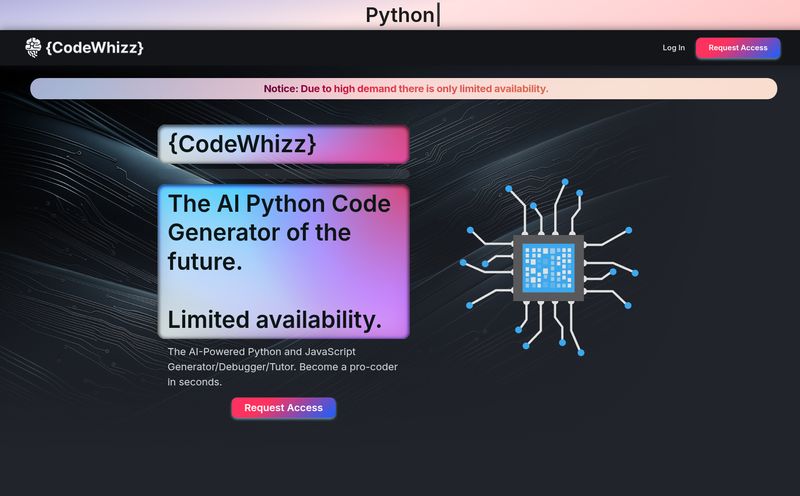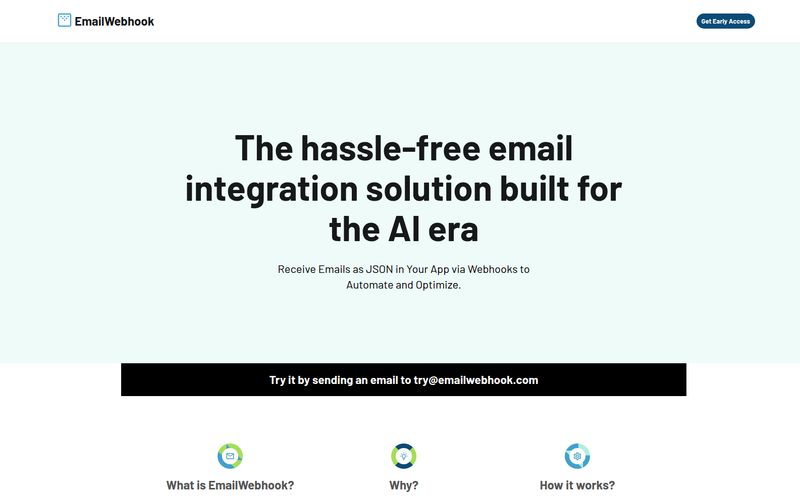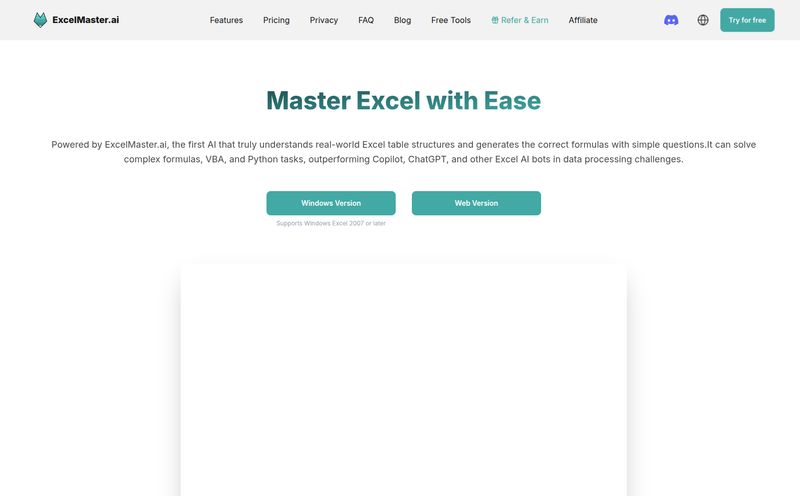If you've ever worked in digital marketing, development, or basically any role that involves making two different pieces of software talk to each other, you've felt the pain. I’m talking about the API integration headache. That special kind of misery that comes from staring at two sets of documentation that might as well be written in different ancient languages, trying to figure out why a simple `POST` request is returning a 400 error for the tenth time. I have war stories. We all do.
I remember one project, we were trying to sync a new CRM with our email marketing platform. It was supposed to be a native integration. A few clicks, they said. It’ll be easy, they said. Two weeks and about a dozen panicked support tickets later, we finally got it working, but I think I lost a bit of my soul in the process. We’ve all been there, right?
So, when I hear about a platform that promises to use “Autonomous AI agents” to handle this mess for me, my ears perk up. But my skepticism meter goes way up too. We've been burned by promises of AI magic before. I decided to take a proper look at APIDNA to see if it’s the real deal or just another tool with fancy marketing speak.
What Exactly is APIDNA, and Why Should I Care?
Okay, so let's break it down. APIDNA isn't just another workflow automation tool like Zapier or Make. Those are great, but they are very much instruction-based. You tell them: “When X happens in App A, do Y in App B.” You have to map every field, handle every condition. It's powerful, but it's still manual labor, just with a nicer interface.
APIDNA takes a different route. It uses what it calls autonomous AI agents. Think of it less like a switchboard operator you have to give precise instructions to, and more like hiring a clever intern who specializes in connecting things. You don't tell them how to connect the CRM to the email platform; you just tell them what you want the outcome to be. “I want new leads from our website form to be created as contacts in HubSpot and added to the 'New Lead' email sequence in Mailchimp.” The agent is then supposed to go off, read the API docs, figure out the authentication, map the fields, and set it all up.
That’s the promise, anyway. It’s a shift from giving step-by-step commands to simply stating your intent. For anyone who has spent days wrestling with OAuth 2.0, that sounds pretty darn good.
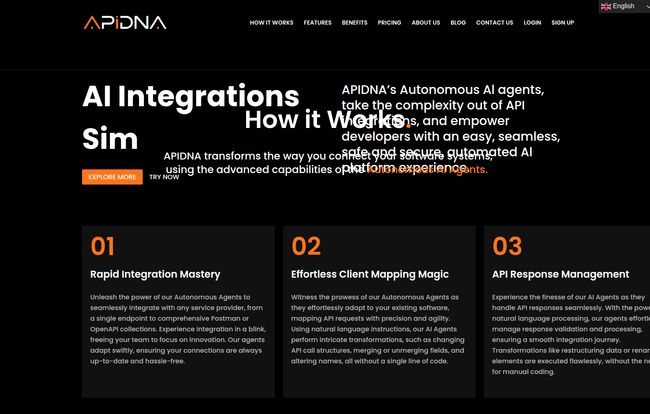
Visit APIDNA
The Core Features That Actually Matter
A platform is only as good as its features, but I’m not interested in a laundry list. I want to know what genuinely makes a difference in my day-to-day. Here’s what stood out to me.
Autonomous AI Agents: The Real Magic Trick?
This is the main event. The whole platform is built on this idea. The ability to use natural language to define an integration goal is a massive shift. I've played around with using ChatGPT to generate integration scripts, and while it can be helpful, it's still on you to debug, deploy, and manage them. APIDNA aims to handle that entire lifecycle. It’s an ambitious goal, and its effectiveness really depends on how well the AI interprets your instructions. More on that later.
More Than Just Connecting Pipes: Testing and Management
This is huge. Anyone can kludge together a connection that seems to work. But what happens when an API updates? Or when an unexpected data format comes through? APIDNA includes comprehensive testing and API management. This means it's not just making the connection, it's building a resilient one. It's the difference between building a bridge out of duct tape and one made of steel. The peace of mind this offers is, frankly, one of teh most appealing parts.
Watching It Work: Monitoring and Scalability
Once you've got your integrations running, you can't just cross your fingers and hope for the best. The real-time monitoring means you have a dashboard that shows you what’s happening. You can see the data flowing, spot errors, and understand performance. And with dynamic scalability, the platform should be able to handle a sudden surge in traffic—say, from a successful marketing campaign or a Black Friday sale—without you needing to panic and provision more servers. It's about building for success from the start.
The Good, The Bad, and The AI-Powered
No tool is perfect. Let's get into the nitty-gritty. Based on my analysis and experience with similar platforms, here's my honest take.
The Good Stuff (Why I'm Excited)
The time and resource efficiency is the most obvious benefit. The hours I—and my teams—have sunk into building and maintaining integrations could have been spent on... well, anything else. The potential ROI here is massive. Then there's the reduced learning curve. This could genuinely empower “citizen developers”—marketing managers, operations people, small business owners—to build the connections they need without having to hire a developer for every little thing. This democratizes a capability that used to be highly specialized. I also find the adaptive AI learning fascinating; the idea that the platform gets smarter and more efficient with every integration it performs is a powerful concept. It’s an investment that grows over time.
The Not-So-Good Stuff (Let's Be Real)
First off, it's not pure magic. There's an initial setup and configuration. You still have to provide credentials, and you have to be clear in your instructions. The quality of the output is directly tied to the quality of your input. This is the classic AI challenge: you have to learn how to ask the right way. This is a new skill in itself. Some might also argue that relying on AI agents could lead to a reduction in manual coding skills. My take? I don't fully agree. It's not about replacing developers; it's about augmenting them. It frees up dev time from tedious, repetitive integration tasks to focus on building core product features. We use compilers instead of writing assembly code, and nobody complains about that. This feels like the next logical step.
Who is APIDNA Actually For? (And What's the Damage?)
The platform seems to have a clear idea of its audience, broken down by its pricing tiers. This isn't a one-size-fits-all tool.
| Plan | Target Audience | Price | My Thoughts |
|---|---|---|---|
| Free Plan | Citizen Developers | €0 | A no-brainer for individuals, small teams, or anyone wanting to test the waters. Perfect for simple, non-critical integrations. |
| Integration Service Providers | Agencies, Freelancers | €199 / month | If you build integrations for clients, this price could be covered by a single project. The time saved could dramatically increase your margins. |
| Enterprise Developers | Large Businesses | Starting at €299 / month | For complex, mission-critical workflows with high-volume needs. This tier is about security, scalability, and dedicated support. |
The pricing seems fair for the value proposition, especially when you calculate the cost of developer hours. The free plan is generous enough to let you properly evaluate if it fits your needs before committing.
My Final Take: Is APIDNA a Gimmick or a Game-Changer?
After digging in, I’m leaning heavily towards game-changer. It's not a silver bullet that will solve every integration problem with a single click. You still need to understand your own processes and goals. But APIDNA is a tool that attacks the right problem. It doesn’t just give you a better hammer; it gives you a robotic carpenter.
It tackles the cognitive load and the sheer tedium of making systems communicate, which is where most of the time and money gets wasted. For businesses that rely on a diverse stack of SaaS tools, a solution like this isn't just a convenience; it's a strategic advantage.
Is it worth trying? Absolutely. The free plan removes any barrier to entry. Go in with a real-world problem you're facing, give it a clear instruction, and see what happens. You might be surprised. I think we're at the very beginning of this AI agent-driven approach to technical tasks, and APIDNA is a fascinating and powerful step in that direction.
Frequently Asked Questions about APIDNA
- Is APIDNA secure for handling sensitive data?
- This is always the first question with any third-party tool. APIDNA emphasizes security in its messaging. Like with any platform, you should review their security and data handling policies. For enterprise users, this would be a major part of the vetting process, and they likely have robust measures in place to satisfy those requirements.
- How much technical knowledge do I really need?
- For the 'Citizen Developer' plan, the goal is minimal technical knowledge. You need to understand what you want to achieve (e.g., "I need this form's data in that spreadsheet") and be able to provide the necessary logins or API keys. You don’t need to know how to code, but understanding your data helps.
- What happens if the AI agent fails to build an integration?
- This will inevitably happen, especially with complex or poorly documented APIs. I'd expect the platform to have a process for this, likely involving error logs that can be reviewed, an option to refine your instructions, and for paid tiers, a support channel to help troubleshoot or perform a manual override.
- Can APIDNA integrate with custom or obscure APIs?
- The power of the AI agent model is that it can theoretically learn any API, as long as it has access to its documentation. This is a potential advantage over platforms with a fixed library of pre-built connectors. Its effectiveness would depend on the quality and clarity of that documentation.
- How is this different from just asking ChatGPT to write an integration script?
- That's a great question. ChatGPT can give you a code snippet. APIDNA provides an entire managed and hosted environment. It handles the authentication, hosting, execution, monitoring, error handling, and scalability of the integration. The AI isn't just writing the code; it's the entire system that runs and manages it.
Conclusion
The world of API integration has been ripe for disruption for a long time. It's a fundamental part of how modern businesses operate, yet it's remained a frustratingly manual and technical process. APIDNA's approach feels like a glimpse into the future. It's smart, it's ambitious, and it focuses on solving the most painful part of the problem. It's not perfect, but it's a powerful tool that has the potential to save businesses an incredible amount of time, money, and sanity. And for that, I'm genuinely optimistic.
Reference and Sources
- APIDNA Official Website: https://apidna.ai/
- APIDNA Pricing Information: https://apidna.ai/plan-pricing/
- What is iPaaS (Integration Platform as a Service)?: MuleSoft on iPaaS
